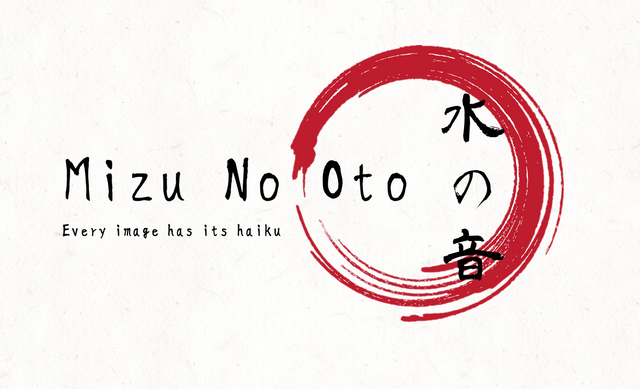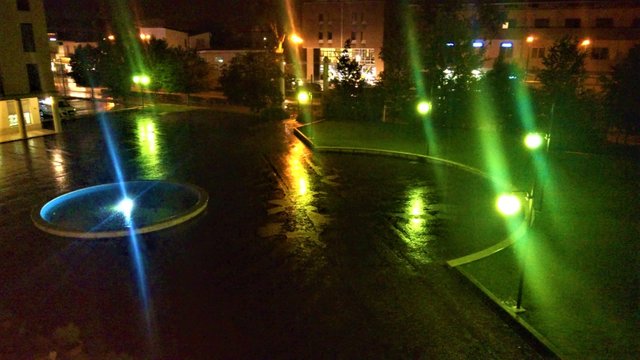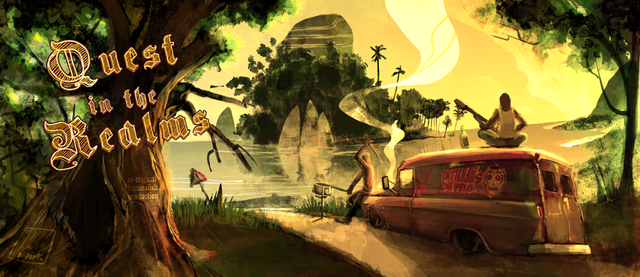Mizu No Oto - Every Image Has Its Haiku - Edition #41 (English)

haiku by Maria Teresa Piras (Italy)
The dragonflies, a traditional Autumn/Fall kigo, introduce us to the November English edition of the Bananafish haiku contest!
Here is how this contest works:
A photo is posted.
You write a haiku inspired by that photo with your own post (use #haikucontest as your first tag) or a comment in the comment section.
You can read other’s haiku and vote for one of them, answering to the special Bananafish comment in the comment section.
The authors of the Best Haiku, Popular Choice, and Best Vote Comment WIN 5 STEEM, 5 SBI & 1000 SNAX!
The contest deadline for both posting haiku and voting is the payout of this post (7 days from the publication). There will be another post with the winners proclamation after 1-2 days from the deadline.
@f3nix tireless work and the vital support by @curie and @crowdmind allow us to keep the amount of prizes up for grabs, which continue to include the SNAX token (see below).

The Prizes:
Courtesy of our partners, @Crowdmind, we're now also giving away SNAX tokens!
Check out Crowdmind's Interview with the team from the SNAX blockchain as well as our previous post.
To receive your SNAX rewards, you'll need to have a SNAX wallet. The best one so far is Nabla app.
Otherwise, you can use Snax.One
Here's a tutorial with photos. on how to set a Snax.One wallet.
So, the prizes now are:

The requirements:
• The haiku should be related to the prompt image.
• A haiku has no title.
• The haiku should be in English, or include an English translation.
• The English haiku form is: a short (3-4 syllable) verse, a longer (5-6 syllable) verse, another short (3-4 syllable) verse.
• There should be the kireji (切れ字), a cut between the 1st and the 2nd verses, or between the 2nd and the 3rd; the cut can be grammatical, as a sign of punctuation, or it can be a cut in the meaning, like two different images.
• The time window to post your haiku and cast your votes is up to the payout of this post.

Prompt Image:

[photo by @marcoriccardi]

Do you want to know how we evaluate the submitted haiku? These are the characteristics we search for:
• Kigo (季語), an explicit or implicit reference to a season, that defines the time of the year in which the haiku is composed or referred to.
• Sabi (寂), the sense of the inexorable passage of time, the beauty or serenity that accompanies the advance of age, when the life of the objects and its impermanence are highlighted by patina and wear or by any visible repairs.
• Wabi (侘寂), the taste for frugal and natural things, rustic simplicity, freshness or silence; it can be applied to both natural and artificial objects, or even non-ostentatious elegance.
• Mono no aware (物の哀れ), empathy with nature and human life; the "feeling of things", nostalgia, regret for the passing of time, understanding of the changeability and of the transience without suffering.
• Yūgen (幽玄), sense of wonder and mystery; it represents the state of mind produced by the inexplicable fascination of things, the feeling of an 'other' universe, full of mysterious unity.
• Karumi (軽み), beauty in simplicity; poetic beauty reflected in its simplicity, free from preconceptions and moral judgment.
• Shiori (しおり), gentleness; the levity and the delicate charm that radiates from the verses, where things are evoked in the reader without aggressiveness or excessive explicitness.

How to write a haiku from a western perspective
In our theoretical excursions on haiku, we have often repeated things "not to do". It almost seems that composing a good haiku goes in total contrast with everything that is poetry for us, both as formal research and as content. The haiku seems to express more emptiness than fullness.
The ma, the shibui, the eloquence of not saying, the avoidance of any rhetorical figure and any rhyming scheme, the nullification of the poetic ego, the predominance of tenuous, light, vague and everyday tones, almost shabby... the haiku seems elusive and anti-poetic in the highest degree, unless you are born and immersed in Japanese culture.
So how can we Westerners write a good haiku?
Fortunately, we can use some lexical devices suitable for the purpose, which can be grouped into four points:
1- subjective identification and personal pronouns;
2- use of adjectives and adverbs;
3- adoption of a concrete linguistic register;
4- few descriptive images.
Let's see these points in more detail.
Subjective identification and personal pronouns.
Haiku scholars are almost unanimous in believing that it is good to use only sporadic personal pronouns and to refrain as much as possible from introspective references to the actor of the poetic scene. In other words, a good haiku is without a protagonist. A good haiku should be impersonal and universal, making the reader participate in the mysteries hidden by nature.
Example:
yamadera no hōmotsu miru ya hana no ame
rain on the cherry blossoms;
looking at the treasures
in the mountain temple
(Takahama Kyōshi, trans. Blyth)
We do not know who witnessed the rain on flowers: the author or some other spectator? This is deliberately left vague, so that the haiku has a wider breath and embraces the entire cosmos.
Use of adjectives and adverbs
In the same way as personal pronouns, even in this case a good haiku requires very sporadic use. Adverbs enrich the description of actions with details, while adjectives do the same thing with situations and objects.
The haiku, however, in this way risks expressing the judgment or the personal opinion of the author, channeling too much the imagination of the reader, which instead should be free to reconstruct the image with its own meanings.
Example:
稲妻や闇の方行く五位の声
inazuma ya yami no kata yuku goi no koe
a lightning -
a heron’s cry
cut the darkness
(Matsuo Bashō)
Two simple and bare images, but very powerful. Everything else is left to the reader.
This haiku is one of the highest examples of yūgen, expressed with a vivid spontaneity, without any frills.
Adoption of a concrete linguistic register
A good haiku is always based on expressive concreteness. Everything should be traced back to the five senses. Inserting words that refer to ideals or abstractions (love, hate, joy, etc ...) produces intellectual artifice, which contrasts with the immediacy and spontaneity that a haiku should convey. These abstractions should therefore be avoided, in favor of concrete and immediate tones. Emotions and feelings are evoked through sensory descriptions.
Example:
初秋や海も青田のみどり
hatsuaki ya umi mo aota no hito midori
starting autumn –
sea and rice fields
one only green
(Matsuo Bashō)
There are only visual sensory notations, but these can easily evoke auditory and olfactory notations (waves and salty air). Everything else, especially the mood, is not expressed in words, but the reader is enabled to experience a feeling that will be much more intimate and strong than if the author had written "autumnal melancholy" in large letters.
Few descriptive images
The last point is once more about not saying too much. This is the most important thing in haiku: you don't have to say too much.
A good haiku is simple, it has few concepts, few images. A rich thought cramped in a brief form would be a bad haiku. Beginners often want to insert as many concepts as possible and create a web of connections between them, convinced that they make the poem more rich and suggestive. This is a mistake.
You can think of a haiku as two frames of natural reality, juxtaposed in association or in contrast. Sometimes, there’s only one frame, sometimes one of the two can show two elements. Must be extremely thrifty.
Example:
chidori naku akatsuki modoru onna kana
plover song,
a woman comes
home at dawn
(Tan Taigi)
There are three very simple elements, divided into two images: a bird (plover) that sings, a woman who returns home while the sun rises. There is a great compositional harmony, a great cleanliness. There are no crowded words. The poet does not assault us with his anxiety to say something. We do not know if the woman is tired, if she is happy, if she has spent a night of work or passion, what the poet thinks of her... it is only a beautiful snapshot that everyone can interpret.
Here then, bearing in mind these four points, it is possible to write an excellent haiku also for us Westerners. I always try to do it. I hope you try it too and we can read the results together.

Good haiku to everybody, and remember the posting/voting deadline: seven days from this post publication!
Your bananafishous haiku herald


Let’s the Bananafish Tribe grow together!

With delegations, Bananafish VP will grow and consequently the upvotes given to every contest entry will be higher.
Following the voting trail is a way to make sure you always support the other participants to the Bananafish contests, automatically upvoting the posts (but not the comments) Bananafish upvotes.
Join the Bananafish Realms on Discord and chat with us: https://discord.gg/ZWmEUWT
If you’re interested, here you can find all the information needed.

[banner credit: @f3nix]
Other Bananafish awesome contests and creative works (click on the banners):




Christmas time -
Mars and Venus unite
phone home now
Welcome to Mizu No Oto!
I like what your haiku suggests, the lights recall the stars, but above all there is the feeling that we are talking about a couple watching this scene from the window
Glad to see your back at this. I am going to try and take part in stuff again. I might have just been missing the stuff I have been busy.
Noctilucent nox blur lights
That reach for heavens above
and darkness below
thanks
Hi @stever82! It's nice to read you again! Don't worry about the things you missed and thank you for your entry :D
Vote your favorite haiku down here:
This one was so hard! I'll make a post later today, but I want to get my piece down here first since it is so close to the deadline, hopefully not too late.
sodden night
empty village "square"
closing time
Yes! That's it. That's the feeling :)
Hi Marco. Almost missed. This is not an entry. There are so many wonderful ones here I will try to support. However, I do like to write Haiku and wanted to participate. Thanks for giving people an opportunity. It seems I really respond to natural scenes, but this photo--of buildings and artificial light-- had a certain mystery about it. A great photo
Shimmering light
Why am I inspired?
Shadows of night
Like other times, I chose to alternate photos of natural landscapes with a photo of an artificial landscape. I believe that it is always a form of nature, closer to what we see every day. However, I really appreciate your attempt and I consider it very elegant ... the shadows of the night are the nature that embraces human constructions
Why is this not an entry? It's excellent. I got the same excitement from the photo, as if something huge is just about to happen. But what?
I love the haiku. Sometimes it's just more fun to support other people. But I do love to write these and am grateful to Marco/Bananfish for going through the trouble of creating an opportunity.
Amigos de la poesía haiku, esta es mi entrada:
https://steemit.com/haikucontest/@oacevedo/mizu-no-oto-every-image-has-its-haiku-edition-41-english
Feast of rain and lights
in solitude.
oh i like this! I'll get over to your actual post later.
I too saw "absense" as a predominant characteristic and tried to use the word. Another great word: "feast"
Greetings, haiku lovers.
Waiting for a poetry party, I leave my entry and my exercise:
https://steemit.com/haiku/@gracielaacevedo/mizu-no-oto-every-image-has-its-haiku-edition-41-english
The field will bloom
Lilies, tulips
Hi @bananafish, here is my entry: https://steemit.com/haikucontest/@felixgarciap/my-entry-for-mizu-no-oto-every-image-has-its-haiku-edition-41-english
Cordial greetings to all!
With much enthusiasm, I bring my exercise from this edition. I congratulate @marcoriccardi for the photograph, it's a poem in itself. I loved it!
¡Saludos cordiales para todos!
Con mucho entusiasmo, traigo mi ejercicio de esta edición. Felicito a @marcoriccardi por la fotografía, es un poema en sí misma. ¡Me encantó!
https://steemit.com/haikucontest/@zeleiracordero/this-is-my-haiku-mizu-no-oto-every-image-has-its-haiku-edition-41
the night gets wet
in the lights.
y la noche se moja
en las luces.
Here I leave you my publication. Good luck to all of you
https://steemit.com/haiku/@evagavilan/mizu-no-oto-every-image-has-its-haiku-edition-41-english
reflections on nothingness.
Fog in the soul